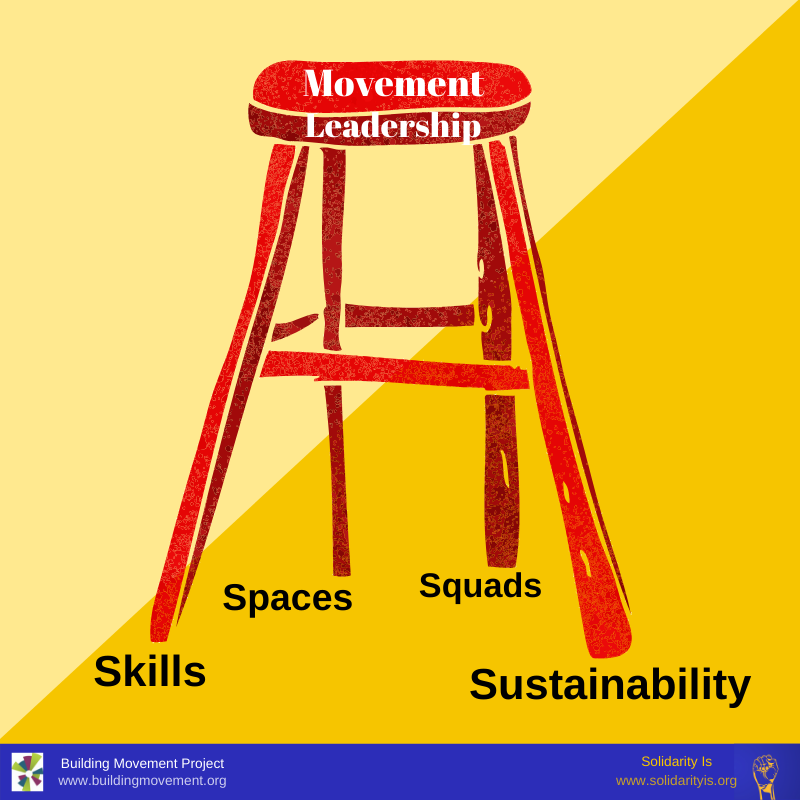
Movement Leadership Stool
The stool of movement leadership is a starting point to support the people driving the movements we need in today’s world. Sustainability is one leg that holds up effective movement leadership as a whole. Movement leaders thrive when they are part of collective spaces where they can build trust, deepen political analysis, ideate, and take risks. And because movement leaders function well beyond their organizations in a broader ecosystem, they need squads – people within and outside their organization playing diverse roles – to support them. Finally, movement leaders can be more effective when they can hone skills such as base building, conflict resolution, and narrative development.
Which leg does your organization and movement need to strengthen? If you are a funder, how do you already support movement leaders and what more could you do, particularly around centering sustainability? If you are working at a social change non-profit organization, how can you generate practices to create a culture of well-being? And, are there more legs that the stool needs?
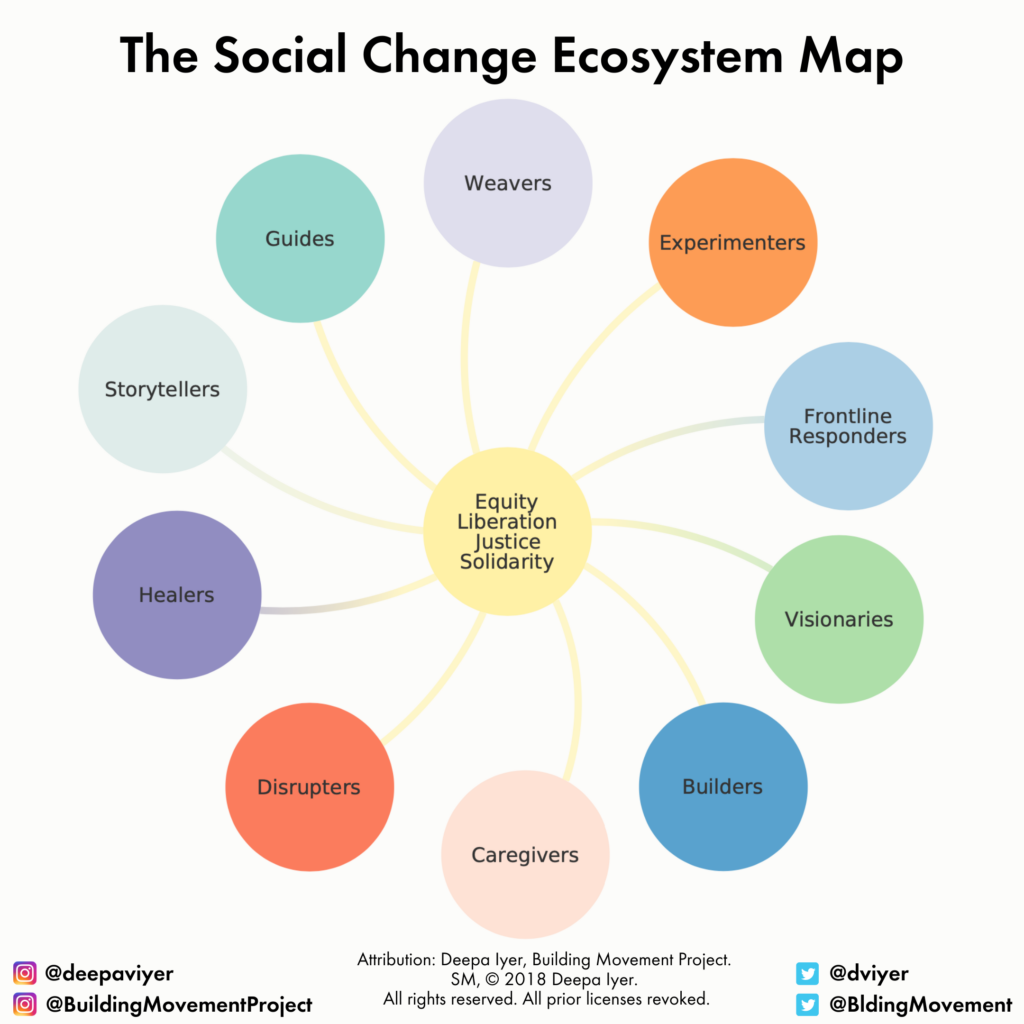
The Social Change Ecosystem Map
In our lives and as part of movements and organizations, many of us play different roles in pursuit of equity, shared liberation, inclusion, and justice. This map (to be used with the Reflection Guide for the Social Change Ecosystem Map) is a starting point to reflect on the roles we play in our social change ecosystem – whether that is a project team, an organization, a network, a neighborhood, an online community, a campus group or a movement. Together, the map and reflection guide can be used at an individual level to reflect, assess, and plan, as well as at staff and board retreats, team-building meetings, orientations, and strategy sessions. Often, this exercise works well if it is used at the start of a gathering or workshop. It can especially be helpful to re-align ourselves when we feel lost, confused, and uncertain in order to bring our fullest selves to the causes and movements that matter to us.

Reflection Guide for the Social Change Ecosystem Map
In our lives and as part of movements and organizations, many of us play different roles in pursuit of equity, shared liberation, inclusion, and justice. This reflection guide (to be used with the The Social Change Ecosystem Map) is a starting point to reflect on the roles we play in our social change ecosystem – whether that is a project team, an organization, a network, a neighborhood, an online community, a campus group or a movement. Together, the map and reflection guide can be used at an individual level to reflect, assess, and plan, as well as at staff and board retreats, team-building meetings, orientations, and strategy sessions. Often, this exercise works well if it is used at the start of a gathering or workshop. It can especially be helpful to re-align ourselves when we feel lost, confused, and uncertain in order to bring our fullest selves to the causes and movements that matter to us.
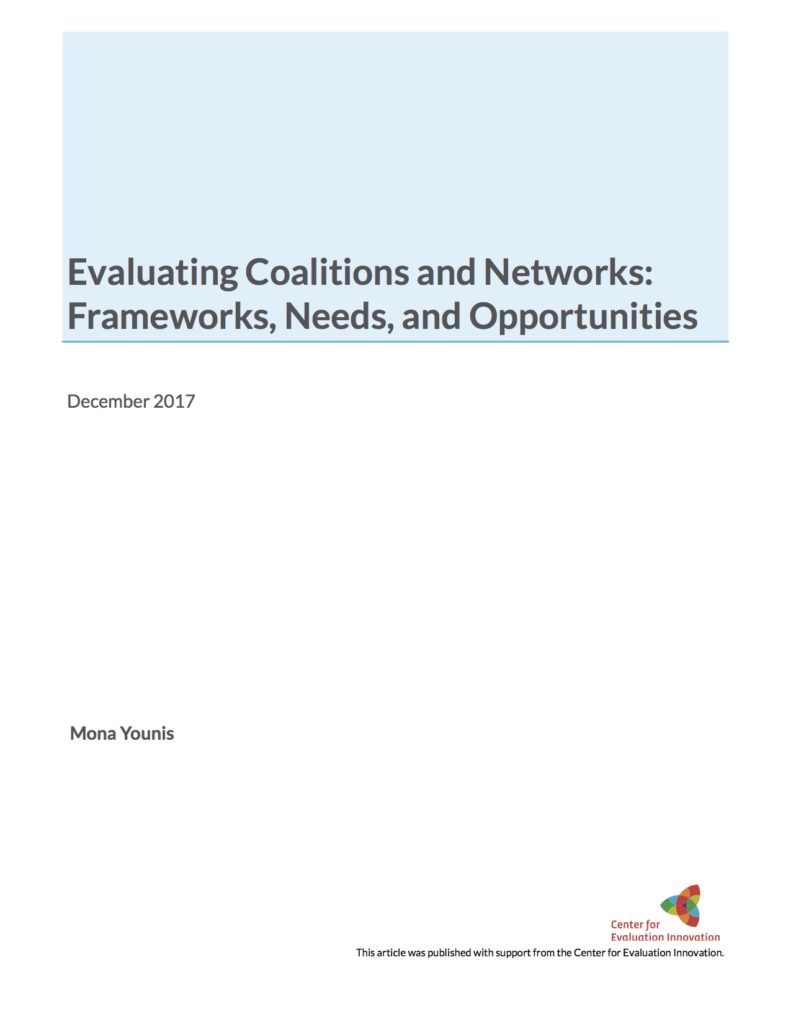
Evaluating Coalitions and Networks: frameworks, needs, and opportunities
Evaluators have developed an impressive array of approaches, frameworks, and tools to support both coalitions/networks and their funders. The report explores these developments, and points to challenges and opportunities that remain in efforts to assess the effectiveness and impact of coalitions/networks.
This review is for coalitions and networks that are considering embarking on evaluation. It begins with what makes coalitions and networks different from standalone organizations, and the implications for evaluation. It then reviews five selected evaluation frameworks, highlighting their advantages, limitations, and applicability. Finally, it offers a set of lessons and opportunities related to coalition/network evaluation based on real-life experiences, along with insights for funders on how best to support evaluation of the coalitions/networks they support.

Making Social Change: Case Studies of Nonprofit Service Providers
Building Movement Project developed this set of case studies as a response to numerous requests from groups looking for real-life examples of the often-challenging process of incorporating social change models into social service work. These case studies, geared toward practitioners, board members, and funders interested in this work, are designed to complement one of our other landmark Building Movement publications: Social Service and Social Change: A Process Guide (2006). The five case studies in this publication offer examples of organizations that are integrating social change activities into their work.
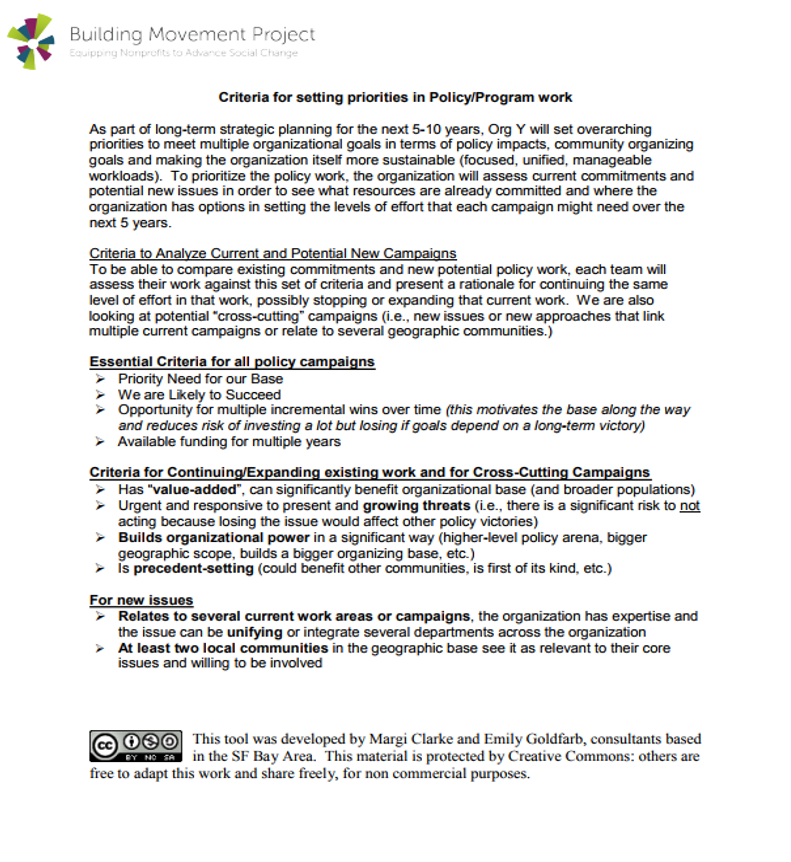
Criteria for Setting Priorities for Policy/Program Work
Based on an actual document developed by a service agency, this is an example of a set of criteria that an agency might use to assess which policy campaigns are a match for the agency.

Theory of Social Change
This discussion guide and exercise applies an adapted version of this familiar framework to your organization in order to help participants consider how service work differs when it incorporates social change goals. Both types of planning and impact are important.
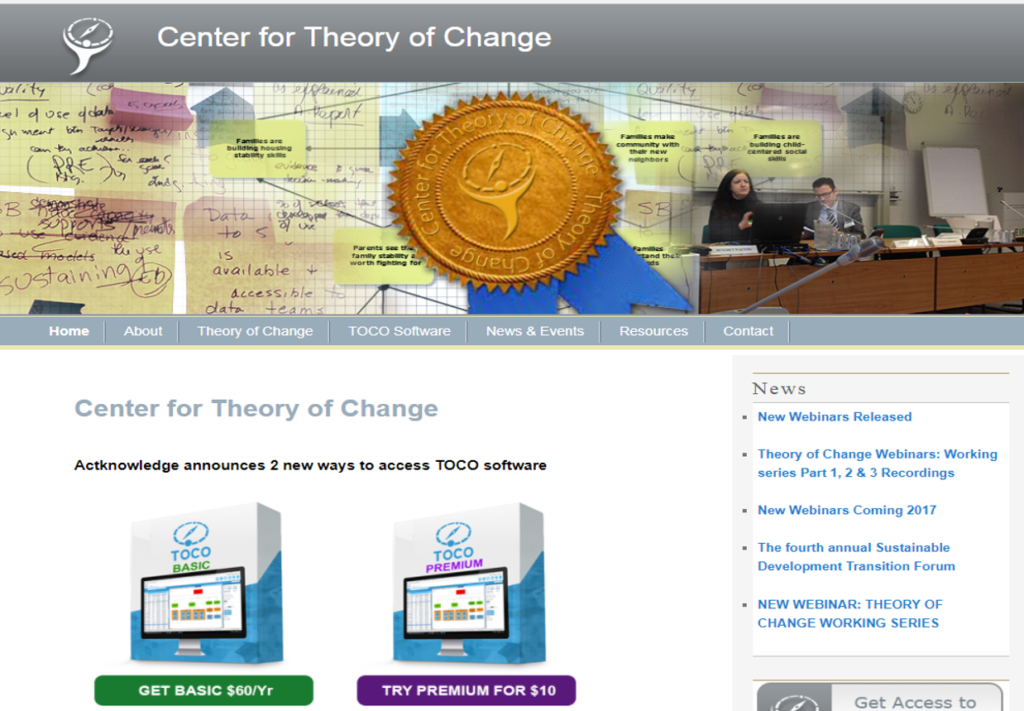
Theory of Change
Theory of Change is a method or technique that can assist communities to think about, plan and evaluate their work. It involves backwards mapping from the goals or desired outcomes of the program to identify what is needed in the program design to accomplish these goals. This website offers in depth resources, guides, and examples for how to develop and apply a TOC.
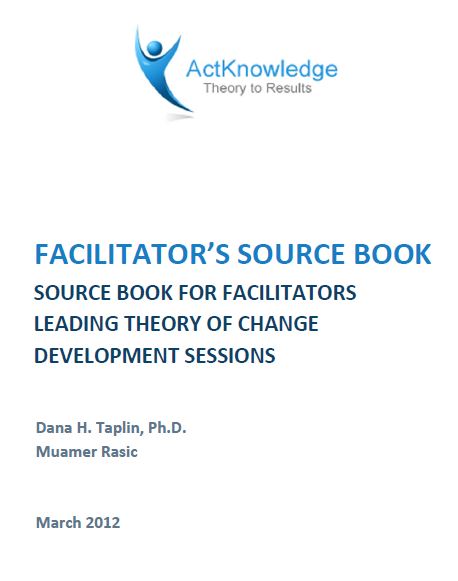
Theory of Change Facilitator Source Book
This facilitator source book defines Theory of Change vocabulary, offers suggestions for preparation for group process, and provides a step-by-step explanation of what it takes to design a Theory of Change.
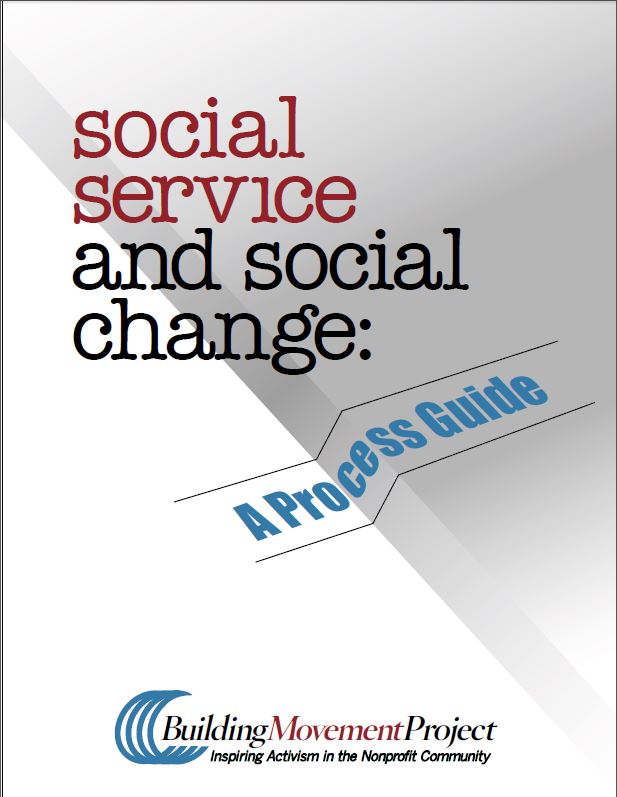
Social Service to Social Change: A Process Guide
In 2006, the Building Movement Project published Social Service to Social Change: A Process Guide for staff and board members of nonprofit organizations to learn to incorporate social change values and practice into their work. While it has many activities, understanding the “Transformation Process” on page nine is foundational to making lasting change.
